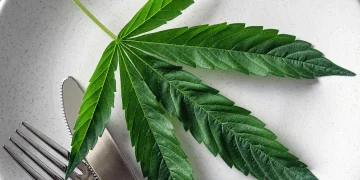[ad_1]
The Future of Sustainable Textiles: Unlocking the Potential of Hemp Fiber
As the fashion industry continues to grapple with its environmental impact, sustainable textiles have emerged as a promising solution to reduce the industry’s carbon footprint. One such material that has gained traction in recent years is hemp fiber. Known for its versatility, durability, and eco-friendly properties, hemp fiber is poised to revolutionize the textile industry. In this article, we will delve into the potential of hemp fiber as a sustainable textile and explore its implications for the future of fashion.
What is Hemp Fiber?
Hemp fiber is a natural fiber derived from the stem of the hemp plant. Hemp has been cultivated for thousands of years for its various uses, including textiles, paper, building materials, and food. The fiber extracted from the hemp plant is known for its strength, breathability, and biodegradability, making it an ideal material for sustainable textiles.
The Benefits of Hemp Fiber
One of the key advantages of hemp fiber is its sustainability. Hemp is a fast-growing crop that requires minimal water and pesticides to thrive, making it a more environmentally friendly alternative to conventional crops like cotton. Additionally, hemp plants absorb more carbon dioxide from the atmosphere than most other crops, making hemp fiber a carbon-negative material.
Furthermore, hemp fiber is renowned for its durability and strength. Hemp textiles are known to be more resistant to wear and tear than conventional fabrics, making them a long-lasting option for consumers. Additionally, hemp fiber is naturally antibacterial and antimicrobial, making it an ideal choice for clothing and other textile products.
The Versatility of Hemp Fiber
Another key advantage of hemp fiber is its versatility. Hemp can be spun into various types of yarns, fabrics, and textiles, ranging from fine, silky threads to coarse, durable fibers. Hemp fiber can be blended with other natural fibers like cotton, silk, or wool to enhance its properties and create unique textures and finishes.
From lightweight summer dresses to sturdy denim jeans, hemp fiber can be used to create a wide range of apparel and textile products. Additionally, hemp fiber can also be used in non-textile applications, such as paper, insulation, and composites, further expanding its versatility and potential for sustainable innovation.
The Future of Hemp Fiber in Fashion
As the demand for sustainable fashion continues to grow, hemp fiber is poised to play a key role in shaping the future of the industry. With its eco-friendly properties, durability, and versatility, hemp fiber offers a compelling alternative to traditional textiles like cotton and polyester.
Leading fashion brands and designers have already started incorporating hemp fiber into their collections, showcasing the material’s potential for creating stylish and sustainable clothing. As consumer awareness of environmental issues continues to rise, we can expect to see an increasing demand for hemp textiles in the fashion market.
Challenges and Opportunities
While hemp fiber holds great promise as a sustainable textile, there are still challenges that need to be addressed to unlock its full potential. One of the main obstacles is the lack of infrastructure and knowledge within the textile industry for processing and manufacturing hemp fiber at scale.
Additionally, there is a perception issue surrounding hemp fiber, with some consumers associating it with its cousin, marijuana. Educating consumers about the differences between industrial hemp and marijuana is crucial to dispelling these misconceptions and promoting the benefits of hemp fiber as a sustainable textile.
Despite these challenges, the opportunities for hemp fiber in the fashion industry are vast. As sustainability becomes an increasingly important factor in consumer purchasing decisions, fashion brands that embrace hemp fiber and other sustainable materials stand to gain a competitive edge in the market.
Conclusion
In conclusion, hemp fiber holds tremendous potential as a sustainable textile that can help reduce the environmental impact of the fashion industry. With its eco-friendly properties, durability, and versatility, hemp fiber offers a compelling alternative to conventional textiles and has the power to revolutionize the way we think about clothing and textiles.
As we look towards a more sustainable future, it is essential for fashion brands, consumers, and policymakers to embrace hemp fiber and other sustainable materials as part of the solution to combat climate change and promote a more sustainable fashion industry.
By unlocking the potential of hemp fiber and integrating it into our fashion supply chains, we can create a more sustainable and ethical fashion ecosystem that benefits both the planet and its inhabitants.
[ad_2]































































